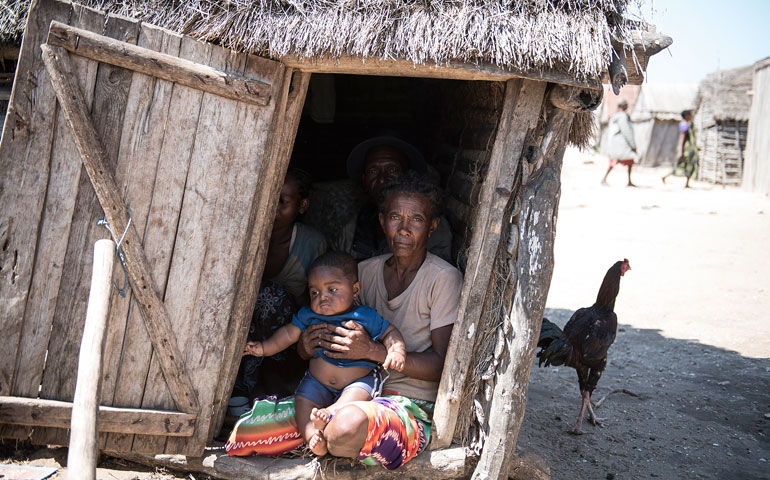
A family sits inside their hut in Ambovombe, Madagascar, Sept. 22, 2015. (CNS/EPA/Shiraaz Mohamed)
Hunger levels are so severe in drought-ridden southern Madagascar that many people in remote villages have eaten almost nothing but cactus fruit for up to four years, said a Catholic Relief Services official.
Eating this fruit leaves crimson stains on people’s faces and hands, and there is a “shame of poverty associated with these stains in Madagascar,” an island nation 250 miles off the coast of mainland Africa, said Nancy McNally, CRS information officer for East and Southern Africa.
The cactus plant “is the only thing that grows” in southern Madagascar, and the plants “are growing everywhere” in earth “that looks like white silt,” she said in a Nov. 23 telephone interview from Nairobi, Kenya.
A father of three, sitting with his wife and children outside the town of Beloha in southeastern Madagascar, “told me that his family had been living on cactus fruit for a year,” McNally said.
“With whatever money he could make” from finding something to sell, he would buy food for the youngest child, she said, noting that “this would amount to a little bit of rice once in a while for the boy, who was about a year old.”
The U.N. Food and Agriculture Organization warned in late November that 330,000 people in southern Madagascar are “on the verge of a food security catastrophe, next step being famine.”
El Nino, a warming of sea surface temperatures in the Pacific Ocean, has aggravated dry conditions in Madagascar and the entire southern African region, where an estimated 39 million people are affected by food shortages.



